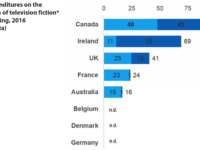Last month, the Broadcast and Telecommunications Legislative Review Panel report sparked an immediate outcry as it recommended that the CRTC identify “trusted” news sites and require news aggregators to link to them:
We recommend that to promote the discoverability of Canadian news content, the CRTC impose the following requirements, as appropriate, on media aggregation and media sharing undertakings: links to the websites of Canadian sources of accurate, trusted, and reliable sources of news with a view to ensuring a diversity of voices; and prominence rules to ensure visibility and access to such sources of news.
In fact, notwithstanding Canadian Heritage Minister Steven Guilbeault’s attempts to walk-back initial comments that regulating news websites and services was “no big deal”, the reality is the regulatory structure envisioned by the panel also empowers the CRTC to require these organizations to disclose financial information, consumption data, and algorithmic information. It would also be given the power to regulate commercial negotiations between news providers and these sites and services.
Notwithstanding the public backlash against the proposals (including a House of Commons petition), there is another lobbying effort to get the government to regulate in support of “trusted” news sources. Led by the CBC, the initiative has succeeded in bringing the Toronto Star, Postmedia, Winnipeg Free Press, La Presse, Le Devoir, and others on board.











